History of Hardwood
Apr 19, 2022 | Carpet One Floor & Home
Hardwood has long been a popular choice in interior flooring. Hardwood has a rich and expansive history from its debut in the early 1600s as a flooring material available only to the royalty and wealthy elite to its introduction to the masses by the American colonies.
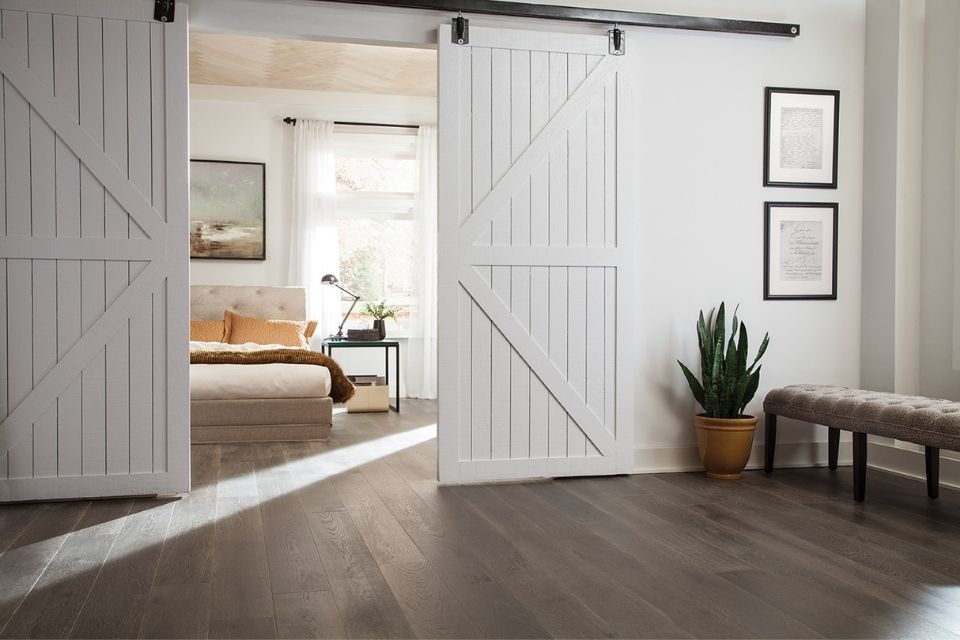
Castle Combes Grey hardwood by US Floors
While so much about hardwood flooring has changed over the years, there are still many things that remain the same – a testament to the ability of hardwood flooring to stand the test of time. To truly understand how hardwood flooring has evolved, we’re taking a deeper look at the fascinating history of hardwood floors.
In the beginning…
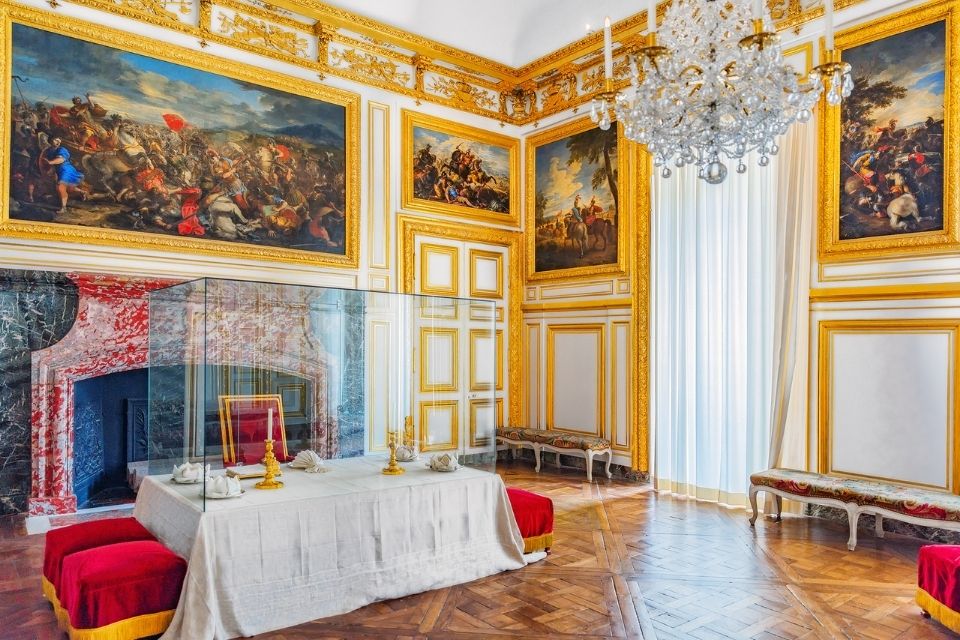
While the installation of hardwood in unique patterns, like the herringbone seen above, has gained popularity in recent years, this trend actually started with the very first hardwood floors. In Europe, aristocrats would have hand-cut, crafted, and installed hardwood floors laid in patterns called Parquetry. They were made from pieces of wood fit together in 3-dimensional designs, and then were scraped, stained, and polished, all of which was done by hand.
The intricacy of the designs and the amount of work that went into creating a durable and beautiful hardwood floor meant that at the time, only the very wealthy or members of royalty could afford to install these floors in their homes.
That is, however, until the creation of the American colonies, which had an abundance of wood and introduced hardwood flooring to the masses. This flooring was very different from the hand-scraped parquetry of Europe, as the wood was cut into long, wide planks that were laid in a very simple pattern. The planks were installed without any kind of finish and would simply be worn smooth by foot traffic and use over time. Because of this, the flooring was known to splinter, crack or create gaps due to shrinking and growth caused by temperature and humidity fluctuations.
Changes Throughout the Years…
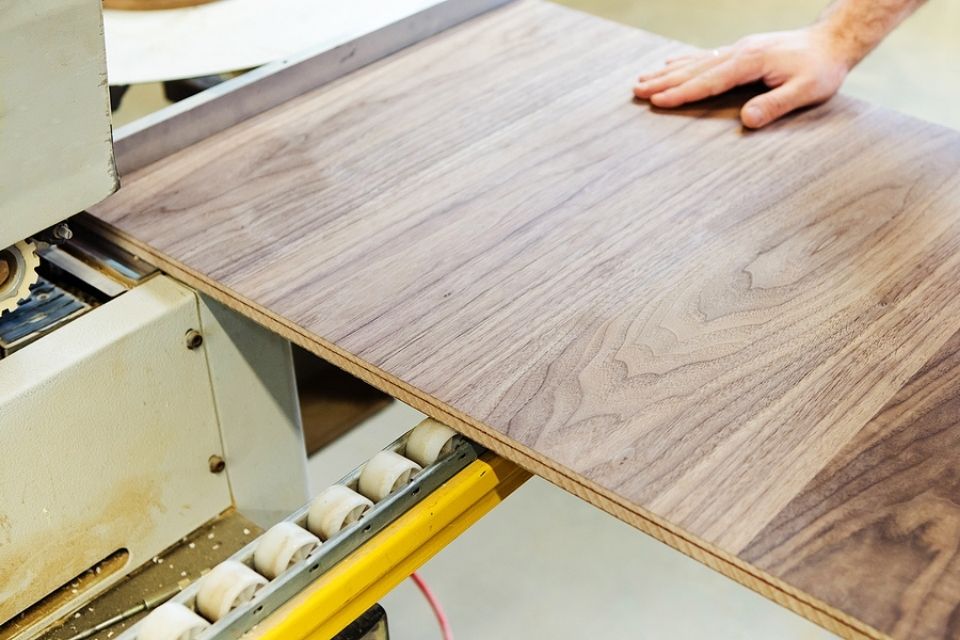
As the demand for hardwood flooring continued to grow, some major cultural shifts made having a beautiful wood floor easier than ever. Around the turn of the century, it was popular to alternate species of wood within the floor, laying down maple and walnut side by side. But with the shift in the industrial revolution during the early 1900s came the invention of steam-powered woodworking machinery that made mass production of finished wood boards possible. Fir became the wood of choice for high traffic areas.
Not only did the invention of steam-powered tools make it easier to mass-produce hardwood floors, but it also meant that planks could be cut in fixed widths and lengths, which made installation easier and the final appearance much more finished. Technology during this time also saw the creation of tongue-and-groove molding, which is a method for joining boards together that conceals the nail holes, forces the boards together, and makes the floors more resistant to upward movement. The structural stability of hardwood flooring was solidified during this era, as well as its popularity through the decades.
It's also important to note that while during this time hardwood floors were popular, other affordable flooring options, like linoleum, cork, carpet, and area rugs, began to come into play. After WWII, technology made it possible to produce quality carpets at a reasonable price, which meant hardwood was dealing with a trending new competitor.
In Modern Times…
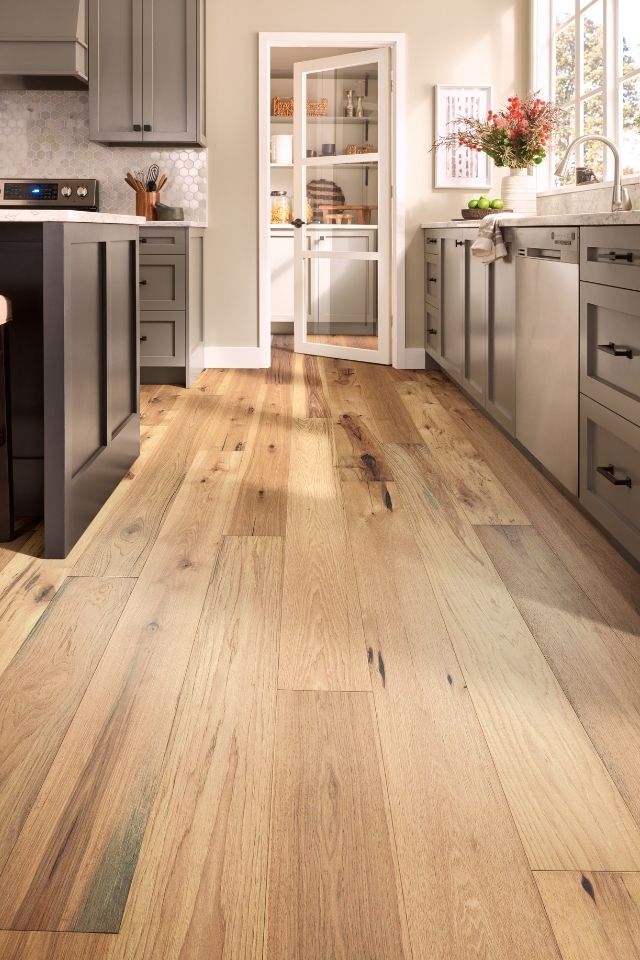
Today, hardwood floors remain a fierce competitor in the world of abundant flooring solutions. With the advancement in technology making it possible to produce waterproof engineered hardwood, quality hardwood flooring continues to stand the test of time.
We are seeing trends resurfacing, like the herringbone parquetry first made popular in the 17th and 18th centuries, embracing the natural colors and appearances of the wood planks like our 20th-century counterparts did before us, and even mixing species, colors, and textures of wood to create dynamic and unique hardwood patterns.
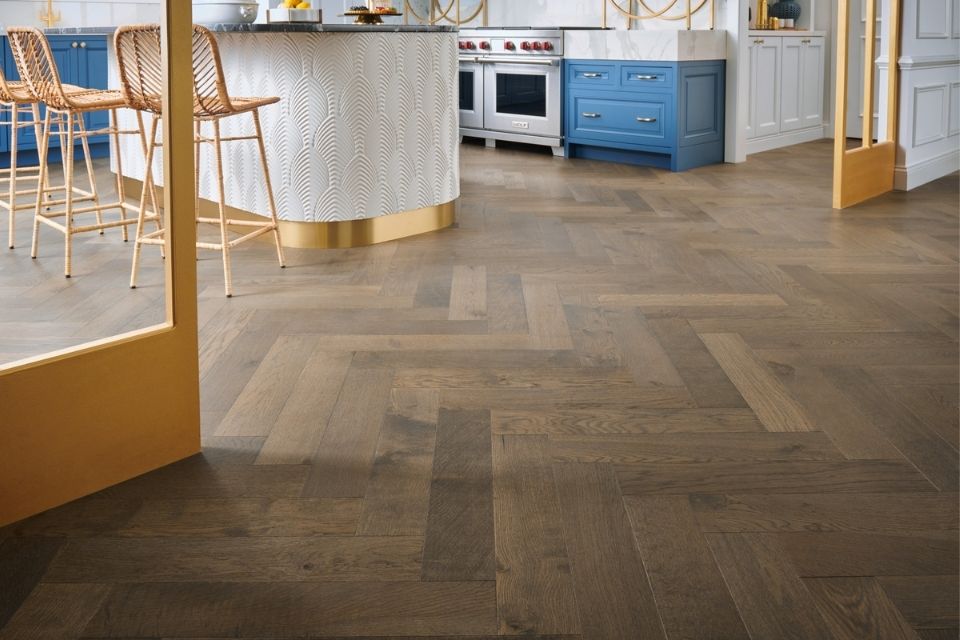
While there are still so many similarities between the first hardwood floors and those that we see today, the focus of the industry and flooring world has changed drastically. Now that stability and durability are a given with hardwood floors, the modern hardwood industry has shifted its focus to sustainability, eco-friendliness, and creating ethically sourced flooring. The importance of ethical logging and sourcing of hardwood is something on the forefront of any hardwood floor stakeholder – from the customer to the manufacturer to the retailer, each person has a responsibility to ensure their floors are coming from a trusted source.
This shift comes in conjunction with the push for all industries to become more sustainable and do better for the environment. For some time, hardwood was not considered to be a sustainable or ethical choice due to over-logging, however, in more recent years it has come back in popularity thanks in large part to changes in lawmaker policies that hold the industry accountable. And of course, thanks to the vintage and classic design trends that continue to grow in popularity day by day.
If you’re feeling reminiscent of hardwood’s past and looking to get that vintage-inspired look in your home, check out our collection of rustic-washed hardwoods.